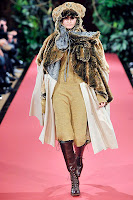
Impressionism was an art movement in France that began in the 1860s. Implicit in its name, impressionism attempted to capture experience or mood of a situation or environment and was less about realistic depictions.


Rococo was mainly a decorative art that existed in 18th century France. It was considered an opulent style and was characterized by shell-like structures and ornate details. Due to a peak in interest in Gothic architecture, the Rococo style gained popularity in England.
Deconstructionist fashion was introduced in the 1970s and was characterized by showing the inside construction of garments and/or removing expected elements from clothes or switching their positions. For example: removing sleeves from a shirt and making them into pant legs.
Art Deco was a very popular movement from 1925 to 1939 and remains a popular historical style having influenced architecture, interior design, graphic design, fashion and many other art forms.
Egyptian dress consisted mainly of lightweight linen fabrics draped around the body. The Egyptians were also fond of ornamentation including wearing jewelry on the neck, head, wrists, anklets. Since wall paintings are the primary way that historians have learned about Egyptian clothing, it is sometimes difficult to distinguish this style from other draped styles. Egyptian styles tend to have straighter lines and are often cinched at the waist on women.
Belle Epoque, “the beautiful age” was an era in late 18th century though early 19th century France that characterized by a life of comfort. Fashion during this period was opulent and carefree and led to the creation of haute couture.









